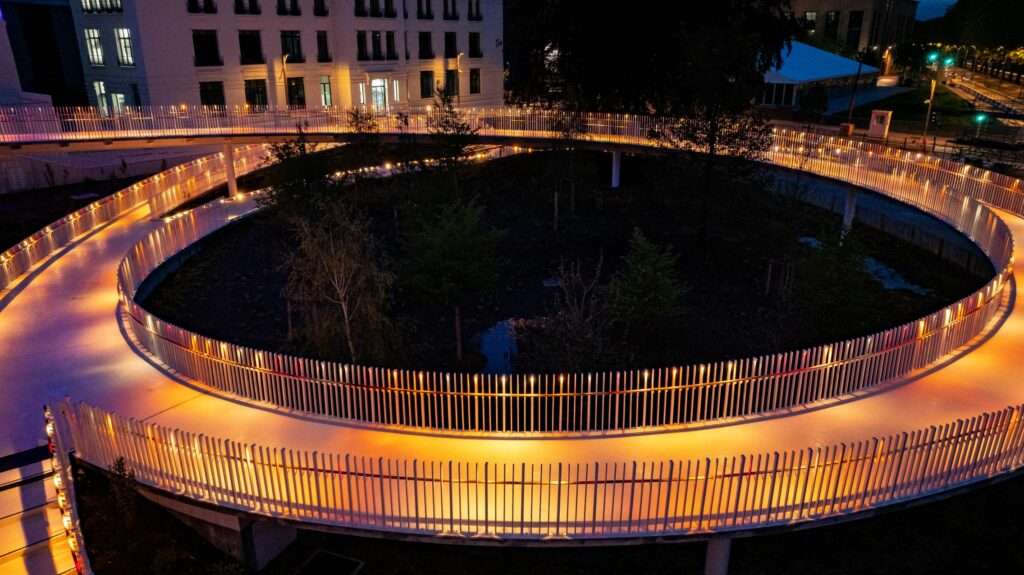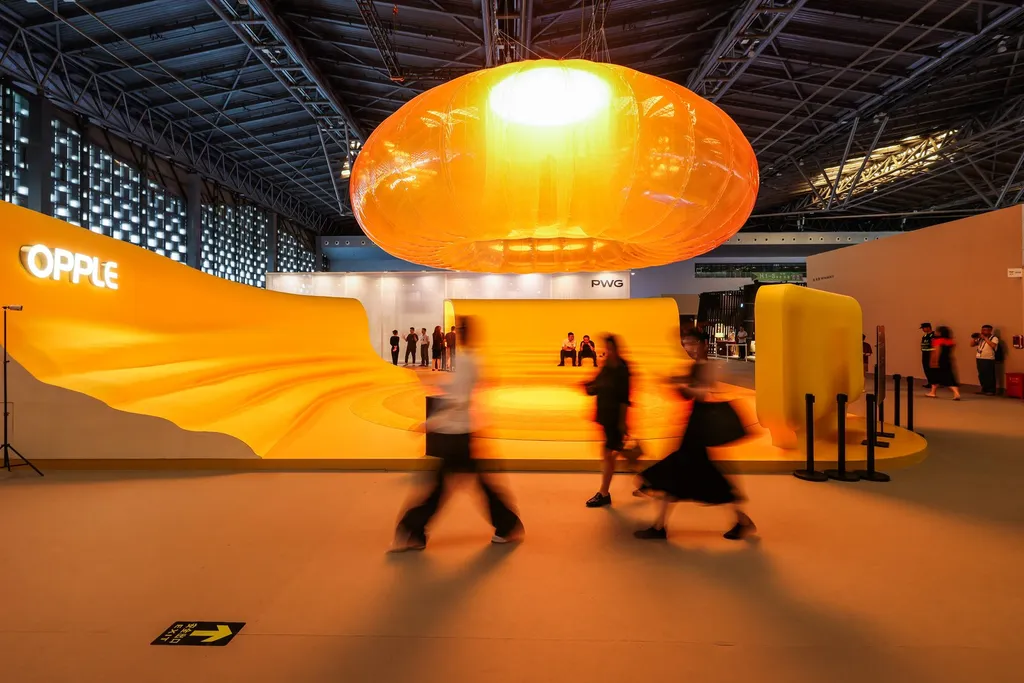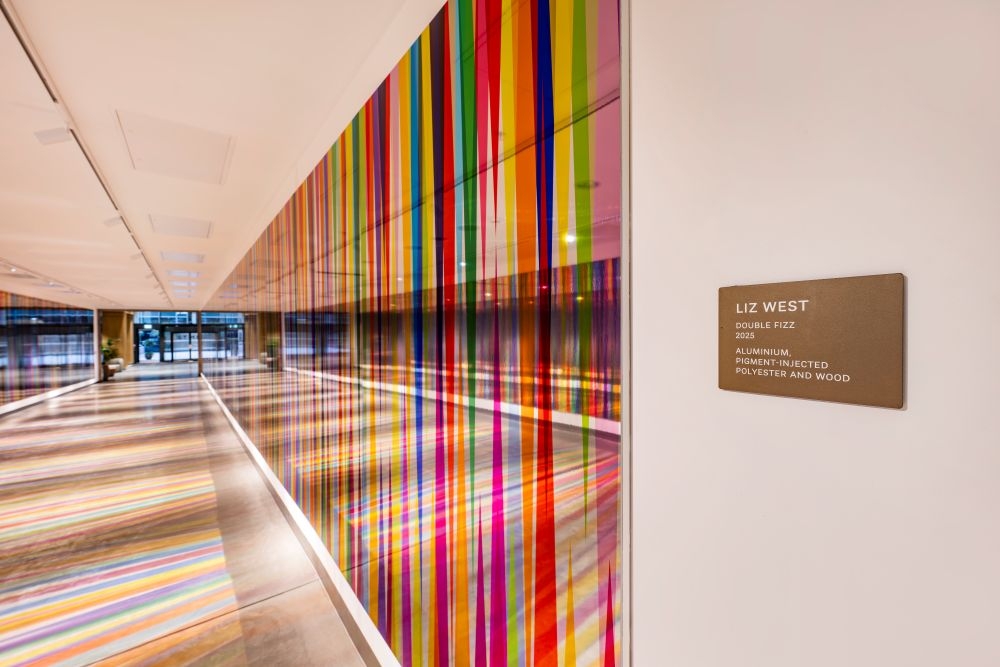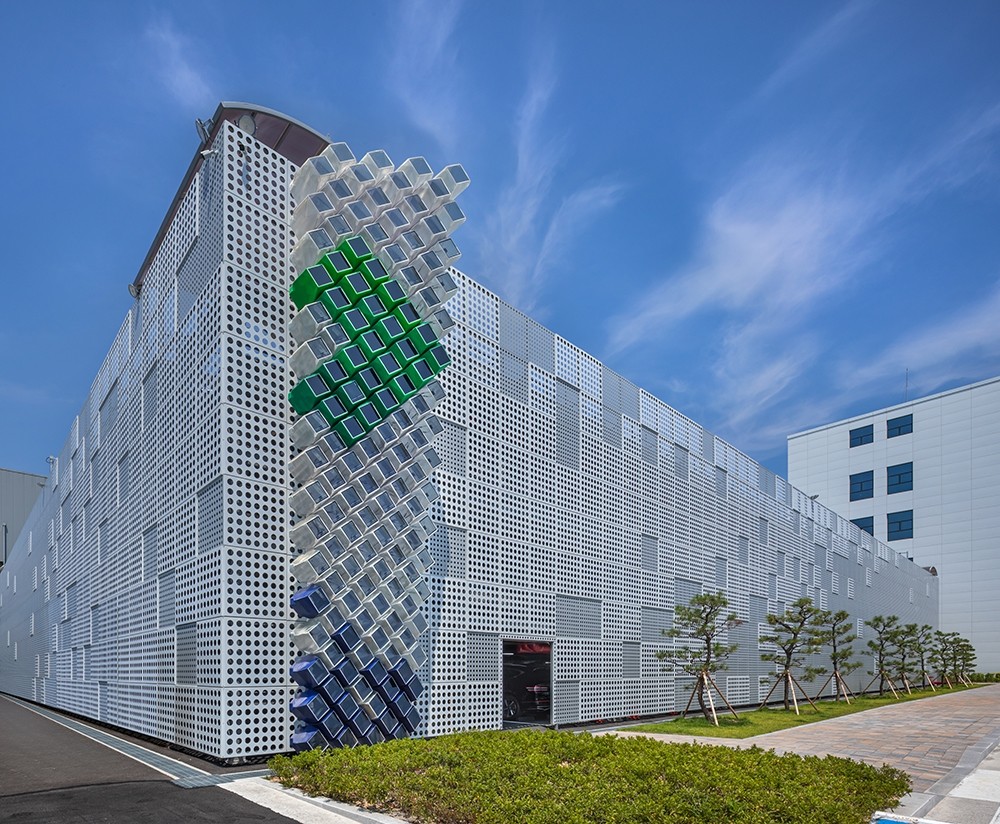Welcome to an interview in which we spotlight Maelle Tertrais, the visionary designer behind the lighting gracing the Olympic Village during one of the world’s most prestigious events.
As the Olympic Games bring together nations in a celebration of athletic excellence and global unity, the lighting plays a pivotal role in setting the stage for this spectacle. Maelle’s approach not only aims to enhance the vibrancy and functionality of the space but also underscores a commitment to sustainability and cutting-edge design.
In our discussion, Maelle shares her insights into the complex balance of creating an environment that is both awe-inspiring and environmentally responsible. From overcoming design challenges to incorporating advanced technologies, learn how her team crafted an experience that will leave a lasting legacy for the future of urban lighting.

What was the overall vision for the lighting of the Olympic Games village? What kind of atmosphere were you hoping to create for the athletes?
The nocturnal narrative of the Athletes’ Village is based on the concept of a “black grid”, which defines areas where darkness is preserved, and thus biodiversity. It accompanies the renaturation of public spaces, and the balance sought between light and darkness meets precise technical specifications (light spectrum, intensity, etc.). This approach not only helps to preserve nocturnal biodiversity (flora and fauna), but also ensures that future residents (during the inheritance phase) enjoy a good quality of life on a day-to-day basis and that their use of the area is active, festive and convivial. This black grid approach aims to create reversible lighting, design local nocturnal atmospheres, and support different forms of mobility.
It incorporates the following components to find a frugal posture while maintaining a desirable, comfortable, and peaceful night-time city: providing the conditions for preserving nocturnal biodiversity, ensuring well-being and good living conditions daily for everyone, and facilitating active, festive, and convivial uses.
What were your biggest challenges in planning and implementing lighting for such a large and diverse village?
Our biggest challenge was designing our lighting supports with a focus on reuse. On paper, the idea of reusing is attractive and widely supported, but at the beginning, we overlooked the obstacles we would face to complete this challenge: we had to repeatedly convince various city stakeholders, who often found it “simpler” or more “beautiful” to create something new.
It was necessary to identify resource deposits in just-in-time flow, guarantee and ensure this new furniture was made from resources unknown to the manufacturers, find an aesthetic and decide whether to maintain a “DIY” appearance that embraces a second life or to disguise it and make it look new.
Ultimately, these questions and the concept of reuse are now being addressed in many projects.
What measures were taken to ensure the project adheres to sustainability goals, particularly regarding energy efficiency and light pollution control?
All the lighting fixtures are LED and oriented towards the ground. Low light levels have been accepted, as well as a reduction in power in the middle of the night, which will significantly reduce energy consumption. Additionally, the LED color temperatures vary according to the season to adapt to the needs of biodiversity. We have a “biodiversity-friendly” period from March to October with color temperatures of 2200K (warm colors) and “human-friendly” periods from October to March with color temperatures of 3000K.
We have also introduced the concept of reuse in all our lighting supports:
- Masts that have been entirely reused and are beginning a second life. These are old lighting columns installed in the 2000s and are now being replaced. Light machining is required to check that they are galvanized and to assemble the shaft to the stock.
- Poles made from bio-sourced materials, incorporating recycled materials. Their supports are made of glued laminated wood, pine from self-managed forests with limited felling. Tubular poles from old scaffolding are attached to these wooden supports.

Beyond the immediate needs of the Games, does the lighting plan have any future considerations for the village’s post-Olympic use?
The lighting project is primarily designed for the legacy phase, which pertains to the future district where many people will live and work. The black grid and the focus on biodiversity and user-friendliness in public spaces are specifically envisioned for this future neighborhood.
The JO (Olympic Games) phase will be superimposed on this neighborhood development. Although it represents a brief moment in the district’s history, it will become a permanent part of that history. For this reason, we have devised a festive and exceptional lighting scheme to accompany the event, which will evolve during the legacy phase.
For instance, on the Place Olympique, there is a large circular ramp connecting the square to the Seine. We developed a concept called “Lampadéphories” that references an ancient ritual.
The lampadéphories preceded the ritual of the Olympic flame at the first games in Olympia: a torchlight race was part of the festivities.
We have installed 878 points of light on this ramp, corresponding to the 878 events of the 2024 Olympic and Paralympic Games. Each time an event is won, the light point associated with that event will illuminate, triggering a dynamic light scenario.
During the legacy phase, you can discover which event was won on a specific day by bringing your phone close to the points of light.
This ramp serves as a spectacular light display during the Olympic Games and as a memory element for the future. This interactive and experiential installation will help reinforce the memory of the Olympic festivities long after the Games are over.
Photos credit: « © Design de Lux 2024 / V. Muracciole »










